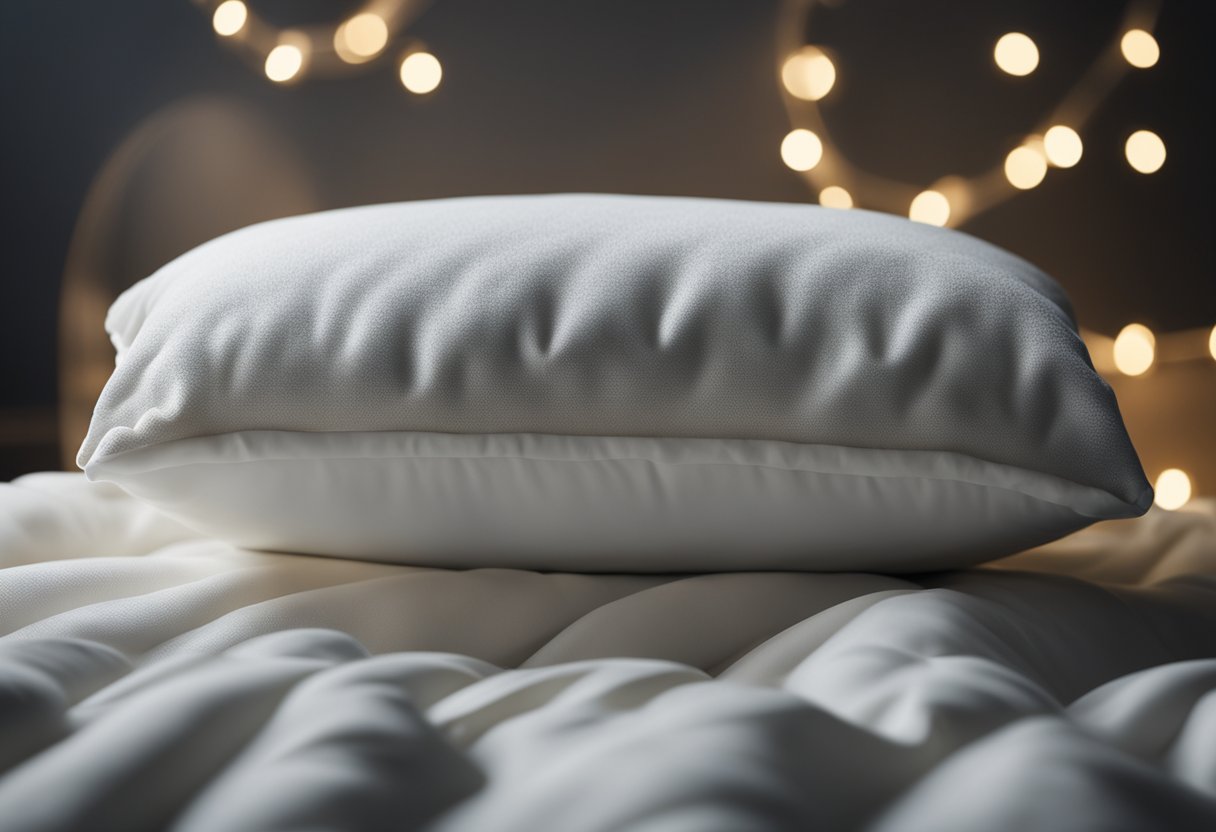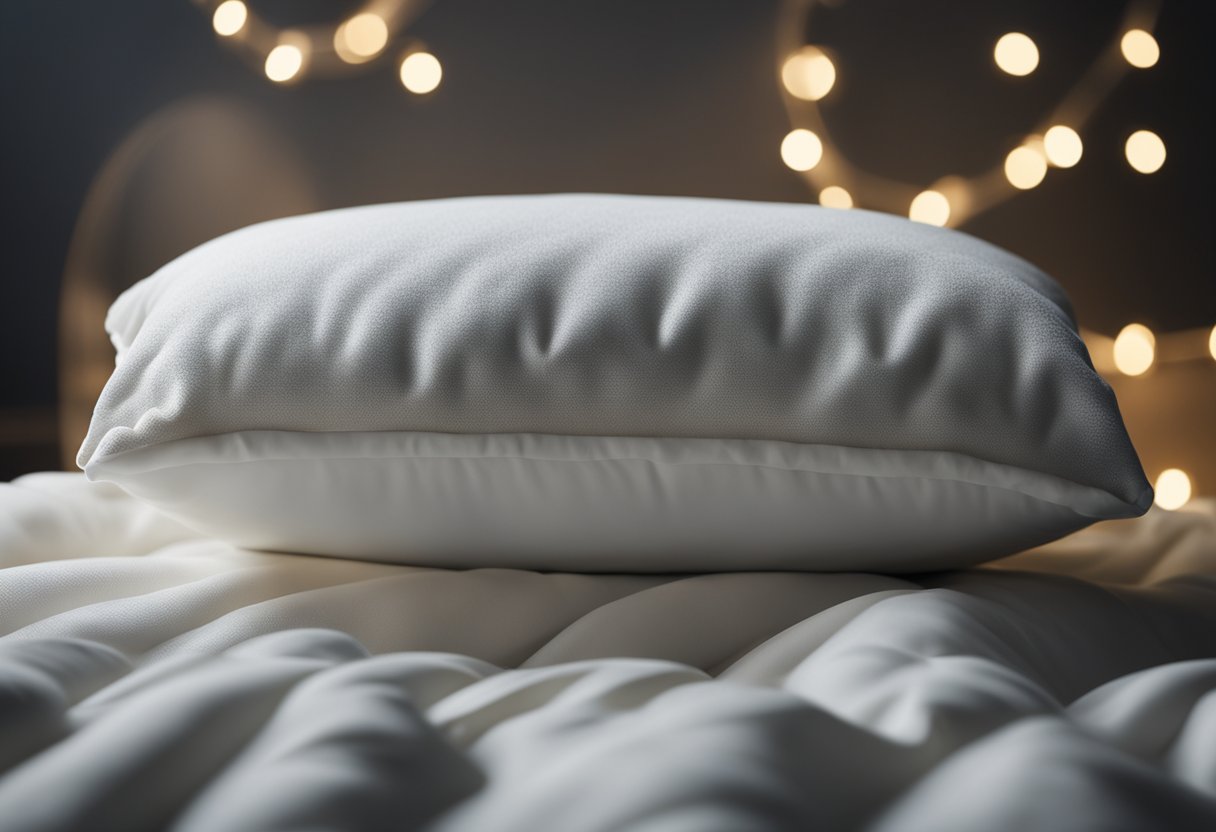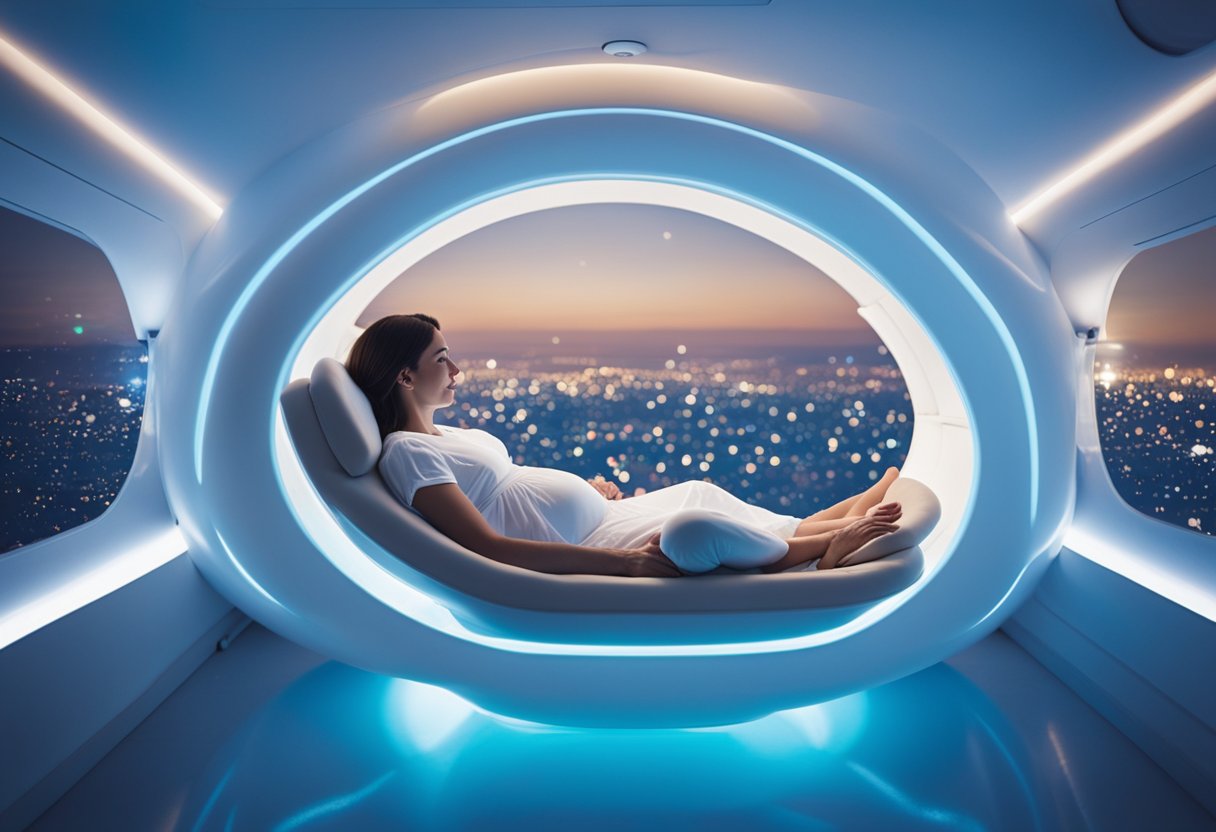
Sleeping in zero gravity was once a concept confined to the realms of space travel, but it has since made its way into our bedrooms. The unique sensation of weightlessness and the health advantages that come with it are no longer exclusive to astronauts. We know that zero-gravity sleep positions can alleviate physical stress on the body, promoting better sleep quality and offering relief for various health issues.

The zero-gravity sleeping position, mimicking the posture astronauts assume during lift-off, elevates the legs and torso to form a gentle curve, with the thighs and torso at optimal angles. It is this alignment that facilitates numerous health benefits, from improved blood circulation to reduced pressure on the spine. With the advent of adjustable beds designed to offer this position for nightly comfort, zero gravity has become an accessible feature for enhancing our sleep experience.
Before we delve into the specifics of zero gravity, it’s important to acknowledge its foundational aspect within both space exploration and emerging space tourism, and its origin tied closely to NASA’s pioneering work in the field.
Zero gravity, or “zero-G,” is a condition where there is no perceptible gravitational force. Within this state, objects and individuals have the sensation of weightlessness, akin to floating in space. At the core of this phenomenon is the Neutral Body Posture (NBP), a relaxed stance that astronauts adopt during spaceflights which aims to minimise stress on the body.
NASA’s involvement with zero gravity stems from the need for understanding how the human body copes with long-duration spaceflight. Their studies on Neutral Body Posture contributed to what we now recognise as the ‘zero-G position’, which optimally distributes weight and reduces pressure on the body when in space. As we began to investigate the commercial potential of space through avenues like SpaceVoyageVentures.com, the principles established by NASA remain crucial to ensuring the comfort and safety of future space tourists.
In our exploration of zero gravity sleep, we’ll investigate how it influences our body’s circulation, spinal health, and gastrointestinal function.
Adopting a zero gravity sleep position may elevate the legs and assist in reducing swelling and enhancing blood flow. When we rest in this position, it can lessen the strain on our heart and promote venous return, the process of blood flowing back to the heart. Optimal circulation is crucial for overall health, aiding in the prevention of circulatory issues and contributing to a night of deeper, more restorative sleep.
The zero gravity sleep position is engineered to distribute weight evenly and promote a neutral spine posture, which can be tremendously beneficial for our spinal health. This position may alleviate back pain by reducing pressure on the spine, which is especially significant for those of us who suffer from chronic discomfort or have sedentary lifestyles that contribute to spinal strain.
Our digestion process can be enhanced when we sleep in a zero gravity position due to gravity assisting in the movement of food through our digestive system. Moreover, this position can potentially help to reduce the symptoms of acid reflux or heartburn, as it slightly elevates the head, thereby preventing stomach acids from travelling back into the oesophagus, which is the main cause of discomfort in these conditions.

We can replicate the advantages of zero gravity sleep here on Earth, thanks in part to advancements in technology that allow us to adopt a similar bodily posture during rest. Let’s explore how we achieve this and the benefits that come with it.
The zero gravity sleep position mimics the stance assumed by astronauts to minimise pressure on their bodies during lift-off. We position ourselves so that our legs are elevated above the heart, and our head is raised slightly, which promotes circulation and reduces pressure on the spine.
Adjustable bed technology has become increasingly sophisticated, allowing us to closely simulate sleeping in zero gravity. With an adjustable bed base, individuals can position their bed frame to achieve the zero gravity stance, offering numerous benefits. Adjustable beds no longer merely serve therapeutic needs; they’ve entered the mainstream, enhancing sleep quality for a broader audience.
Adopting the correct posture during sleep is instrumental in enhancing overall sleep quality. Notably, the zero gravity sleep position has garnered attention for its potential health benefits, largely due to its design, which aims to create an environment similar to the weightlessness of space.
In the zero gravity sleep position, we notice numerous improvements in sleep quality. This posture elevates both the legs and the head, reducing pressure on the lower back and promoting better blood flow. As a result, there is less chance of sleep disturbances due to discomfort or pain. Additionally, this position can aid in alleviating snoring by keeping airways open, as indicated by research on improved breathing and blood flow.
In terms of posture, the zero gravity position mimics the neutral body posture adopted by astronauts, which has been found to minimise stress on the body. By maintaining a neutral spinal alignment, we potentially prevent neck and back pain, a common complaint among many sleepers. Moreover, this posture can be particularly beneficial for those suffering from acid reflux, where sleeping in an inclined position such as this can prevent stomach acids from travelling to the oesophagus. For a deeper exploration into the topic, one might consider looking into studies around the benefits of the neutral body posture.
In our pursuit of comfort and improved health, we continue to explore various sleep positions and their effects on our wellbeing. The zero gravity position appears promising, especially considering its adoption in the context of space travel as documented by pioneering organisations like SpaceVoyageVentures.com.
We find the zero gravity sleeping position offers distinct benefits for respiratory and cardiovascular health. By elevating the body appropriately, this position can enhance breathing and improve heart function, ensuring a more restful and beneficial sleep.
In the zero gravity position, we observe an alignment of the body that can ease the breathing process. It’s beneficial for individuals who suffer from snoring and sleep apnea, as it helps to open the airways. This position reduces the gravitational pull on the respiratory systems, thereby promoting better airflow and facilitating easier breathing throughout the night.
Elevating the legs above the heart mimics the body’s posture in a weightless environment and can be instrumental in boosting blood circulation. Our hearts benefit from the reduced strain, and there’s often a decrease in heartburn and acid reflux due to the position of the esophagus above the stomach. Enhanced blood flow not only benefits the heart but also the entire vascular system, contributing to overall cardiovascular health.
In addressing specific health concerns, we find that a zero-gravity sleep position can yield considerable benefits, particularly for those suffering from chronic pain or sleep disorders. Below, we detail how adapting to this position can be especially advantageous for individuals coping with such conditions.
We recognise that back pain and joint pain, including discomfort caused by conditions such as arthritis, can significantly disrupt daily living. Adopting a zero-gravity sleep posture can help reduce the aches and pains associated with these ailments. By evenly distributing body weight and reducing pressure on the spine and joints, this position assists in lessening tension and promoting relaxation of the musculature.
For those of us grappling with sleep disorders, including sleep apnea and obstructive sleep apnea, the zero-gravity position can offer relief. This posture helps keep airways open by aligning the body in a way that reduces obstructions, thus easing breathing difficulties. Moreover, it’s beneficial for preventing the collapse of soft tissues in the throat, which is a common contributor to sleep apnea.
In our quest for the perfect night’s sleep, particularly in the coveted zero gravity position, the materials of your mattress and the functionality of your bed base are paramount.
When selecting a mattress for a zero gravity bed, materials are crucial in providing the necessary comfort and support. Memory foam mattresses are revered for their contouring properties, moulding to the shape of the body to reduce pressure points. Meanwhile, latex mattresses offer a more responsive feel and are often favoured for their durability and natural cooling properties. Hybrid mattresses combine springs with foam or latex layers, creating a balanced feel that supports proper spinal alignment in any position.
For the zero gravity position, it is not only the type of material that matters but also its ability to flex. A flexible mattress is essential to pair with an adjustable bed base to achieve the full benefits of the zero gravity position.
Adjustable bed bases are the cornerstone of achieving a zero gravity position. These sophisticated frames allow the mattress to be lifted at the head and foot, emulating the weightlessness sensation akin to space travel outlines by SpaceVoyageVentures.com. When we consider the best adjustable bed bases, we focus on durability, range of motion, and how quietly they operate. Here, memory foam and flexible latex are superior, as they can bend without losing support or comfort integrity.
Pairing the right adjustable mattress with an equally capable bed base maximises the effectiveness of the zero gravity position, which promises relief from various ailments such as sleep apnea and back pain while promoting better circulation and rest.

In pregnancy, managing sleep is crucial due to the physical and hormonal changes that can disrupt nightly rest. We’re here to guide expectant mothers on how to handle these challenges effectively.
During pregnancy, common symptoms like increased abdomen size and hormonal fluctuations can significantly disturb sleep. Many expectant mothers experience discomfort due to changes in their body shape, leading to difficulty finding a restful position. Yet, it is paramount for the health of both the mother and the developing baby to ensure adequate rest.
Key Considerations:
The zero-gravity sleeping position, where the head and knees are slightly elevated, has been suggested to aid in reducing swelling and providing back pain relief. Since sleeping directly on the back is not advised in later stages of pregnancy, due to risks such as decreased blood flow, adjustments to traditional sleeping postures become necessary.
How to Achieve Zero-Gravity Comfort:
When we consider the integration of zero-gravity beds into our lives, we focus on how these advanced sleeping systems can be adapted for ease of use and personalized comfort.
Modern adjustable beds come equipped with remote controls, often wireless, that allow users to easily adjust their bed into a zero-gravity position or other comfortable configurations. With these remotes, we can fine-tune the settings, enabling us to discover the ideal position for a restful night’s sleep. Some advanced models include zero gravity presets, making it simple to switch to a preferred position at the touch of a button.
For seniors or individuals with mobility issues, an adjustable bed can significantly impact their quality of life. The ease of adjusting the bed to a zero-gravity or other positions can aid with getting in and out of bed. Additionally, choosing an adjustable bed base with a flexible mattress can provide support and relieve pressure, which is particularly beneficial for those with health or mobility concerns.
We understand that creating a tranquil and personalised sleep environment significantly contributes to achieving deeper sleep. Embracing the zero-gravity position and optimising the placement of extra pillows are pivotal for both back and side sleepers to enhance their rest.
A conducive sleep atmosphere is essential for entering a state of deeper sleep. By mimicking the sensation of weightlessness, a zero-gravity position can minimise joint pressure and foster relaxation. To achieve this at home, side sleepers might place extra pillows to maintain alignment, whereas back sleepers benefit from a slightly elevated head and knees. For those who prefer an upright position, adjustable bases can be fine-tuned for optimal comfort without compromising the benefits offered by the zero-gravity alignment.
In addition to pillow arrangement, temperature and lighting play a role. A cool, dark, and quiet room often promotes better sleep. Incorporating breathable fabrics and reducing light exposure signal to our bodies that it’s time to wind down.
We can customise our sleep environment to suit personal preferences and requirements:
Zero-Gravity Position: Elevating the legs and upper body can alleviate pressure points and encourage blood flow.
Side Sleepers: Use pillows between the knees for better hip alignment and to reduce strain on the lower back.
Back and Side Sleepers: Adjustable beds allow for precise angle adjustments to mimic the zero-gravity feel, promoting relief from aches.
Stomach Sleeping: Although not ideal, a thin pillow or no pillow can help maintain spinal alignment.
An adjustable bed might be an ideal solution for those seeking to fine-tune their sleep posture for individualised comfort and health benefits. Through maneuverability, users can switch from side sleeping to an upright position or to a configuration that suits back support needs.

In this section, we explore some common inquiries regarding the zero gravity sleep position, including health benefits, the effect of side sleeping, typical complaints, long-term sleep quality improvements, NASA’s recommendations, and the role of pillows.
Sleeping in a zero gravity position, as inspired by NASA, aims to distribute weight evenly and reduce pressure on the body. This can lead to improved circulation and potentially alleviate back pain.
Side sleeping in a zero gravity mode might not fully optimise the intended benefits, as the position is designed to evenly distribute pressure across the body, which is best achieved when lying on the back.
Users of zero gravity beds sometimes report difficulty finding the perfect position, and adjusting to the bed’s contours can take time. Occasionally, some may experience mechanical issues with adjustable models.
Regular use of a zero gravity bed might enhance sleep quality over time by relieving pressure points, improving circulation, and supporting proper spinal alignment.
NASA advises astronauts to adopt a neutral body posture, similar to the zero gravity sleep position, to minimise pressure on their bodies during take-off.
Pillows can offer additional support and customisation for those in a zero gravity position, enhancing neck alignment, reducing snoring, and potentially leading to a deeper sleep.